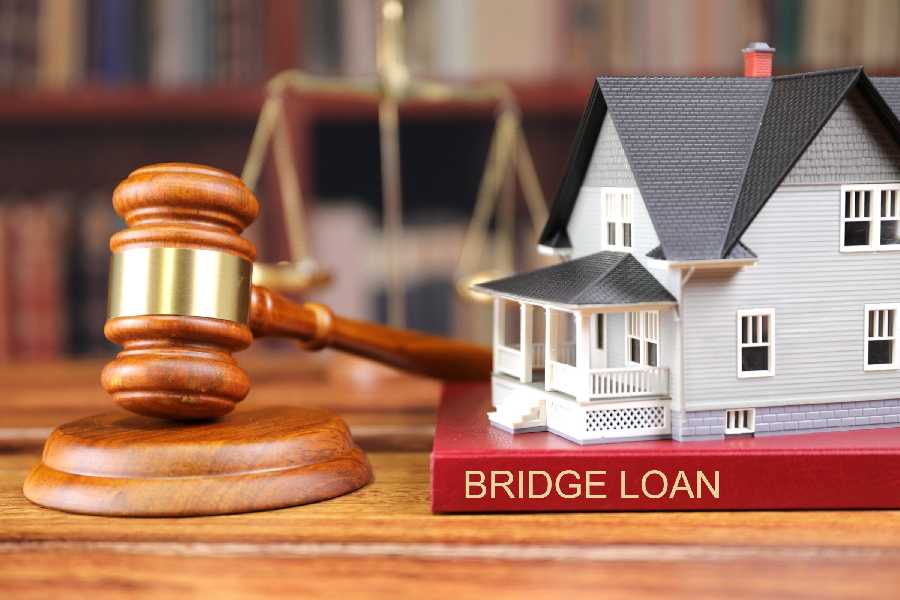A bridging loan can be obtained through a specialised broker or directly from the lender; however, they are not commonly available and are rarely given by high-street banks. Even though a bridging loan is usually quicker to obtain than a mortgage, lenders will still conduct extensive checks on your credit history, mortgage obligations, and the worth of your current property and the one you’re buying.
What is a Bridging Loan?
A Bridging loan is a short term loan usually used to ‘bridge the gap’ or shortfall when you buy a property. For example, if you are buying a property and don’t quite have enough, but you will renovate it and gain equity through the renovation then a bridging loan might be suitable. You can then remortgage the property, use the equity released from the remortgage to pay off the bridge. You want to use a bridge as a short term plan because interest rates are usually higher than mortgages and they can be expensive.
Bridging loans, both regulated and unregulated, come in a variety of forms. Private individuals who lend their own money or have another source of funds to banks and other huge entities are all examples of lenders. Borrowing from an FCA registered and/or reputable lender is recommended whenever possible.
Why might you need a bridging loan?
Funding the purchase of a new property
You may find yourself in a situation where you are purchasing a new home with money from the sale of an existing property that has not yet closed. A bridging loan is an excellent option in this situation since it literally ‘bridges the gap,’ allowing you to finalise the purchase of your new home. You can use the revenues from the sale of the other property to repay the bridge once it has been completed.
Buying a property at auction
Typically, you can anticipate paying a 10% deposit on the day of the auction, with the remainder of the purchase bid due soon after. For many people, this is a concern because a conventional mortgage can take up to 28 days to take effect. A bridging loan eliminates any concerns about not being able to finish the home purchase within the auction deadline because they may be arranged quickly and repaid once the mortgage is available.
Purchasing a commercial property
When it comes to long-term loans, commercial mortgages can be far more complicated than residential mortgages, thus traditional lenders generally need big deposits, making getting financing through this route a lengthy and exhausting procedure. Furthermore, if the procedure takes too long, investors may lose their money if the transaction does not go through. When buying a commercial property, bridging finance is a far more practical choice because the short-term money can be drawn down in as little as five days, depending on the borrower’s circumstances, allowing property investors to stay competitive.
Funding a refurbishment or renovation
Because modest repair and remodelling projects are typically short-term, a bridging loan can be the ideal option. House developers and buy-to-let investors that need to enhance the condition of an existing property, add a new bathroom or kitchen, or make upgrades before renting it out to new tenants might use bridging finance for refurbishment. The bridging loan can be rapidly created to bridge the short-term funding gap before being repaid once the project is completed and a standard mortgage has been secured.
Types of bridging loans
Closed bridging loan
A closed bridging loan is accessible for a specified period that both parties have agreed on. Lenders are more ready to accept it since it gives them more assurance that the loan will be paid back. Its interest rate is lower than that of a standard bridging loan.
Open bridging loan
The repayment procedure and payoff date of an open bridge loan are unclear at the time of application. To ensure the security of their cash, most bridging companies subtract loan interest from the loan advance. An open bridging loan is preferred by borrowers who are unsure when their intended finance will be accessible. Due to the uncertainty of loan repayment, lenders demand a higher interest rate for this type of bridging loan.
First charge bridging loan
A first charge bridging loan grants the lender first ownership of the property. If a default occurs, the first charge bridge loan lender will be paid first, followed by the other lenders. Because of the low level of underwriting risk, the loan fetches lower interest rates than second charge bridging loans.
Second charge bridging loan
The lender for a second charge bridging loan takes the second charge after the first charge lender. These loans are just for a short period of time, usually less than a year. They have a greater chance of default and, as a result, a higher interest rate. After all liabilities owed to the first charge bridging loan lender have been paid, a second charge loan lender will begin collecting payments from the customer. A bridging lender for a second charge loan, on the other hand, has the same repossession rights as a first charge lender.
Advantages and Disadvantages of Bridging Loans for Property Investing
Advantages
- You can borrow the money immediately to keep your real estate deal on pace.
- It is possible to obtain significant sums of money by borrowing.
- The payback terms can be adjusted to meet your schedule.
- It is possible to get a loan on a property that would be impossible to get from a traditional lender.
Disadvantages
- You’ll need to put up an asset as collateral for a bridging loan. If you can’t repay the bridging loan, you could lose that asset, such as a house.
- With a higher interest rate, you pay for the convenience of quick, flexible credit.
- Bridging loans might include a variety of fees that increase the overall cost.
If you enjoyed this article you might also like to read about Introducing HMO Mortgages.



3 thoughts on “What is a Bridging Loan and Where can you get one?”